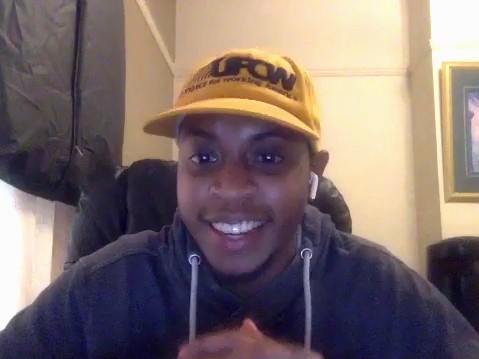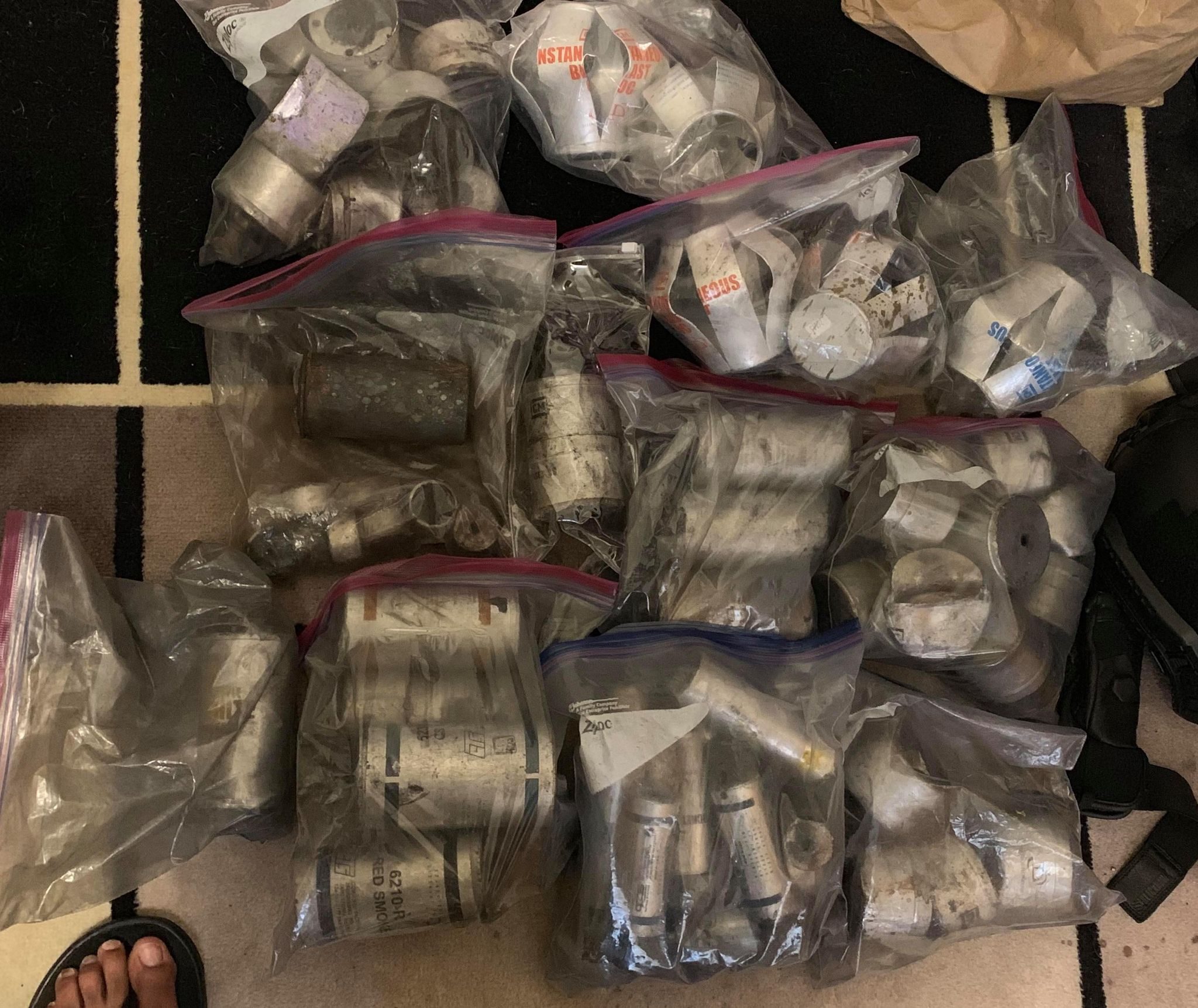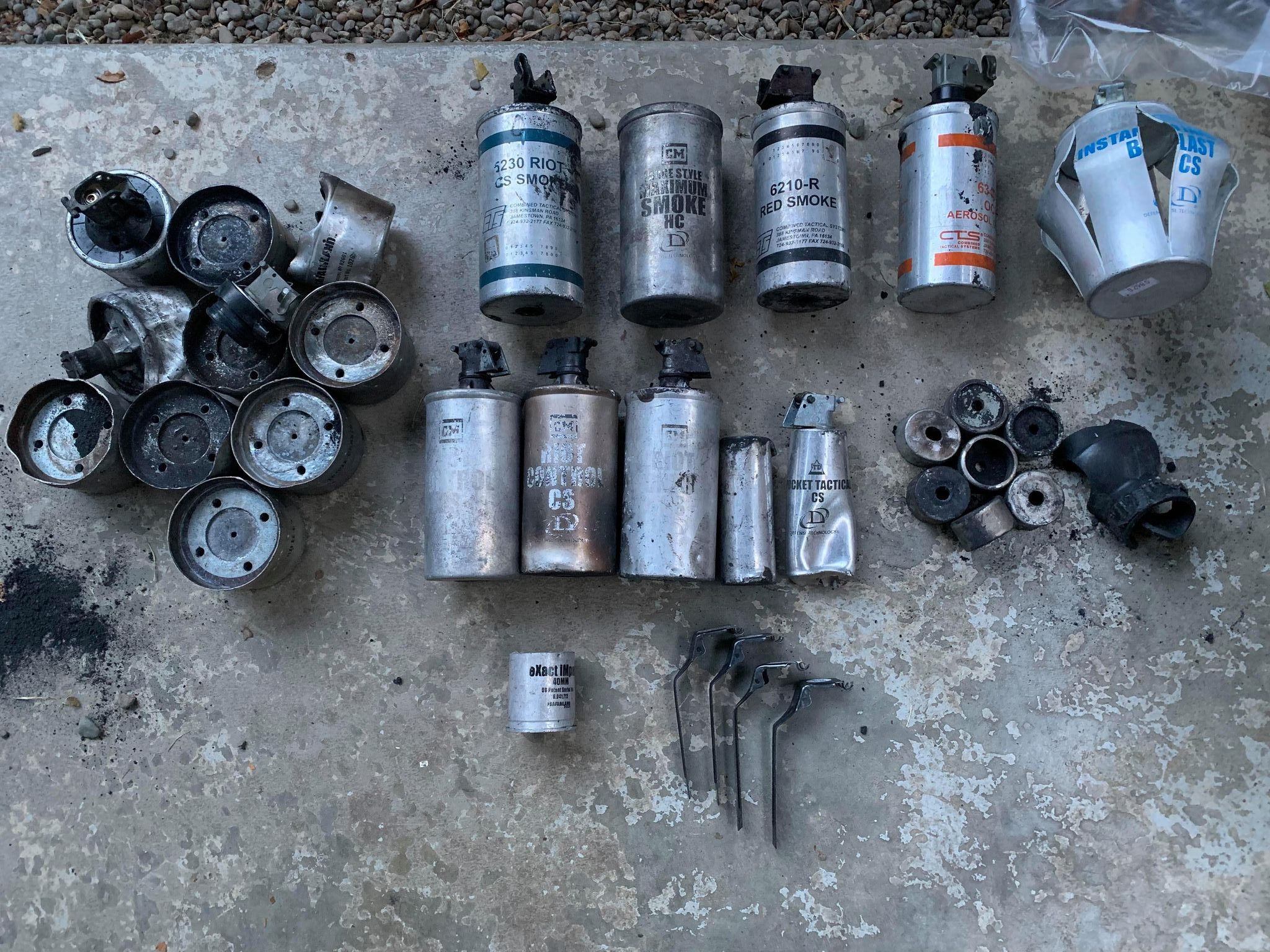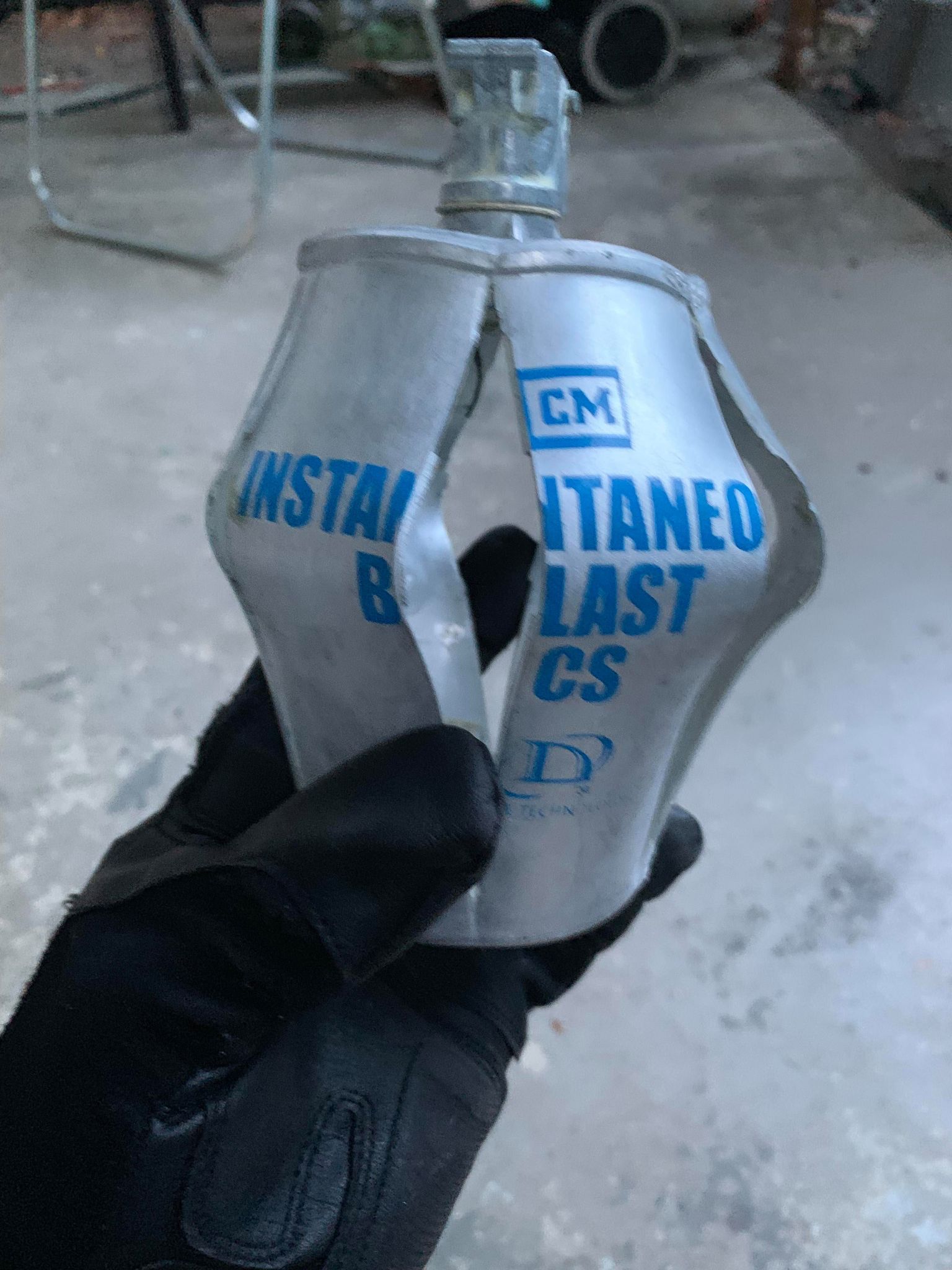CLACKAMAS COUNTY, Ore. (KOIN) — It began with a viral video of a man crying “I can’t breathe” while pinned under the knee of a Minneapolis police officer, but the protests and riots that have defined Portland for the past seven months grew to include so many other causes. Demonstrations varied from peaceful marches of thousands of people, to vandalism sprees and violent clashes between smaller groups and law enforcement.
While peoples’ reactions to the unrest hinge largely on their own values and political views, the indisputable fact is that 2020 has brought Portland’s longest-running protests. Here’s how they unfolded, and insight from demonstrators and community leaders into how they might evolve in 2021.
How it started
The first Portland riots following George Floyd’s death erupted May 29 at the Multnomah County Justice Center, after a peaceful vigil earlier in the day. Some crowd members made it inside the building, setting fires while corrections records staff were working inside. Others fanned out across downtown, vandalizing and looting as they went.
In the following days, the City of Portland adopted, then abandoned, an 8 p.m. curfew. Portland Police Bureau Chief Jami Resch stepped down amid criticism the department wasn’t diverse enough. Chuck Lovell took her place. A U.S. District judge granted a temporary restraining order limiting law enforcement’s use of tear gas and other crowd control munitions.
In mid-June, those protesting and rioting against police got their first win: The Portland City Council voted to cut $15 million from PPB’s budget. Activists had demanded cuts of $50 million.
Feds arrive in Portland
While many Independence Day celebrations had to be canceled or altered due to the coronavirus pandemic, downtown Portland had plenty of fireworks. After a couple weeks of dwindling crowd sizes, another riot was declared when people launched mortars and other fireworks near the Justice Center and Federal Courthouse, prompting a clash with police and federal officers.
This marked a major shift, as federal officers became the main law enforcement agency responding to the political unrest. It also sparked a resurgence.

“It’s not that the protest in and of itself was dying down,” said Braxton, who is part of a group called Black Unity PDX that organizes some protests and lobbies for legislative change. He asked to only be identified by his first name, a common request from demonstrators who often cite fears of doxing.
Activists were refocusing on legislative strategies or other ways to bring more people into the fold, he said, adding, “We were trying to move on from the nightly drama and then the feds showed up and then it kind of regressed.”
Braxton also attributed the arrival to an increase in crowd sizes, because it tapped into an even more passionate issue.
“It became about, you know, people’s right to protest and defending your first amendment right to free speech … something that pretty much everybody feels pretty strongly about,” he said.
The feds’ involvement also marked a dramatic increase in the force leveled against demonstrators. Federal officers beat a Navy veteran with batons. Freelance journalists reported seeing officers snatch protesters off the streets, pulling them into unmarked vans. Tear gas and other airborne chemicals wafted through the streets night after night.
Braxton has two tubs, full of dozens and dozens of spent cannisters, rubber bullets, and other crowd control munitions he gathered to try to keep a record of what was being used on protesters.
“Most of these are from the feds,” he said while showing KOIN 6 News the collection. “PBB has a budget. They like, ran outta tear gas … The feds would just come out and it would just be like can-can-can-can-can-can.”
Governor Brown sends in the troopers
At the end of July, Oregon State Police Troopers largely replaced federal officers, after Governor Kate Brown said she and Vice President Mike Pence reached an agreement. Brown accused federal officers of acting as an “occupying force” and bringing violence to Portland.
“Our local Oregon State Police officers will be downtown to protect Oregonians’ right to free speech and keep the peace,” Brown tweeted at the time.
Two weeks later, OSP announced it would be pulling out of Portland immediately, citing an inclination to move resources “back to counties where prosecution of criminal conduct is still a priority.” Just two days previously, newly elected Multnomah County District Attorney Mike Schmidt had announced his policy of presumptively declining to prosecute some of the most common charges stemming from the nightly demonstrations.
Some of the consistent protesters saw it as another win in an ongoing game of cat and mouse.
“When we started figuring out that you know, the police are just gonna chase us around … we, you know, came up with plans,” Braxton said. The crowd would get chased around, then come back, again and again. “If they really want to be out here until 6 a.m., then I guess that’s what we’re going to do until they stop.”
“We’re going to dance in the street,” he said. “We’re gonna, you know, basically exercise our rights to peacefully protest. And if they want to arrest 50 people a night, then, OK, that’s what they’re going to do. And their jail is too small. They don’t have room for that many people and the DA isn’t prosecuting any more. So we won that too.”
Brawls in broad daylight, and a man killed at night
As the summer progressed, so too did clashes among civilians.
On August 15, shots rang out at the rally for “patriots” near a parking garage close to the Justice Center. No one was hurt. The man accused of firing the shots is facing nearly a dozen charges.
The next night, a man was pulled from his pickup and brutally assaulted near the protests. Video of the attack went viral. Marquise Love eventually received a 20-month prison sentence for kicking Adam Haner in the head.
On August 22, a rally organized by members of right-wing groups and police supporters was met by left-wing counter protesters. Several afternoon skirmishes turned violent, but the Portland Police Bureau did not intervene.
Then, on August 29, a pro-Trump car caravan that entered downtown Portland ended with the murder of a supporter of the right-wing Patriot Prayer group. Witnesses said two men were approaching Aaron J. Danielson in an aggressive manner. One witness said he heard “We’re going to f***ing kill you,” another said he heard something to the effect of “You wanna go?” According to court documents, Danielson pulled out a can of bear mace and sprayed it, before a third man shot him.

Police eventually identified the suspected shooter as Michael Reinoehl, who had described himself in a social media post as “100% ANTIFA,” suggested the tactics of counter-protesters amounted to “warfare,” and had been shot near one protest and cited for having a gun at another, according to the Associated Press.
Federal task force members shot and killed Reinoehl as they moved in to arrest him on September 3 in Washington.
Streak ends, scattered “direct actions” remain
Massive wildfires in September ended the protest streak after more than 100 consecutive nights of disturbances. But the fight wasn’t over; it just evolved. Again.
Around the time the federal presence in Portland was subsiding, demonstrators ramped up what they call “direct action” marches in other parts of the city, targeting different police buildings each night. After the fires, the marches became less frequent, but expanded to include more targets, often symbols of capitalism or colonialism.
“What we have seen lately are sporadic localized events where people show up, it seems like damage property by usually by breaking windows, spray painting, tearing things down such as statues, and then leaving fairly quickly,” PPB spokesperson Greg Pashley said.
Ahead of the presidential election, Gov. Brown issued a unified command order, putting both the Multnomah County Sheriff’s Office and Oregon State Police in charge of public safety. The anticipated violent outbreaks didn’t materialize until the night after the election though. Vandals hit small businesses and churches, and the National Guard was activated.
A couple weeks later, Hawthorne District business owners spent Thanksgiving day cleaning up broken glass and graffiti after an early-morning movement.
Most recently, protesters fought with law enforcement during an attempted eviction at the Red House in North Portland, the biggest flashpoint in a months-long saga. Demonstrators even set up road blocks around the neighborhood that remained standing for nearly a week. Now the roads are open, but residents and business owners remain frustrated and fed up with the occupation.
“One of the things that I take some encouragement from is that protests have continued, but the violence has started to diminish,” Commissioner-elect Mingus Mapps told KOIN 6 News. “A good example was some of the actions we’ve seen over at Red House. That’s a very complex issue, but at the same time I am incredibly grateful to everyone who worked to help bring that to a peaceful resolution.”
What comes next?
Pastor J.W. Matt Hennessee of Vancouver Avenue First Baptist Church hasn’t seen anything approaching the magnitude of the 2020 protests in his more than 30 years in Portland. He suspects timing had everything to do with it.
“With COVID-19 there were a lot of places people couldn’t go,” Hennessee said. “And I think deeply that people were passionate about wanting to see change. And really believed that their voice made a difference.”

He’s been inspired by the peaceful protests — and the fact that they’ve reached far outside Portland — but dismayed by the destructive acts. Hennessee and other Black leaders have frequently condemned violent acts, like when “mobs” targeted Commissioner Dan Ryan’s home multiple times, damaging the property.
Hennessee said when he’s gone to protests, some people have told him they don’t care about the damage caused by members of the group, and that this was their way of protesting against “institutional stuff, whatever that may be.”
“There were people who said, ‘Hey. Burn the thing down,'” he said. “(Next year) my hope would be, particularly as it relates to the peaceful demonstrations, that it still is about Black Lives Matter, because the work hasn’t been done yet.”
Braxton won’t criticize the methods of other demonstrators and thinks it’s a good thing the protests have grown to encompass more than just BLM. But he and Hennessee do agree there’s more to accomplish.
“Until it’s right, protests will continue.”
Mingus Mapps, Portland Commissioner-elect
Black Unity PDX is trying to work with legislators to effect institutional change with education, the foster care system, healthcare, redlining and, of course, police brutality, Braxton said.
“We’ve definitely made tangible progress,” he said, citing the cuts to PPB’s budget, TriMet’s cuts to transit police, reduction in protest prosecutions, and Portland Public Schools’ decision to get rid of school resource officers.
Hennessee doesn’t necessarily agree that all those changes are “progress.”
“I personally spoke out against the reduction in policing as it related to the Gun Violence Reduction Team,” he said. “I thought that was not a very thoughtful decision at a time when we were already seeing a spike in gun violence on the street.”
He suspects the council may have felt a tremendous amount of pressure to make cuts to PPB as quickly as possible.
“(The protests) got the city council’s attention, but I think the decisions they ended up making, in my view, were not as thoughtful as they could be,” he said. “It’s very important to remember that when you make a change, you create other impacts as well.”
One way or another, Portlanders expect to see the battle continue in 2021.
“Until it’s right, protests will continue. And that’s appropriate,” Mapps said.



